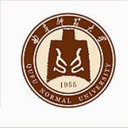The oligomeric stromal proteome of Arabidopsis thaliana chloroplasts.
Ключевые слова
абстрактный
This study presents an analysis of the stromal proteome in its oligomeric state extracted from highly purified chloroplasts of Arabidopsis thaliana. 241 proteins (88% with predicted cTP), mostly assembled in oligomeric complexes, were identified by mass spectrometry with emphasis on distinguishing between paralogues. This is critical because different paralogues in a gene family often have different subcellular localizations and/or different expression patterns and functions. The native protein masses were determined for all identified proteins. Comparison with the few well characterized stromal complexes from A. thaliana confirmed the accuracy of the native mass determination, and by extension, the usefulness of the native mass data for future in-depth protein interaction studies. Resolved protein interactions are discussed and compared with an extensive collection of native mass data of orthologues in other plants and bacteria. Relative protein expression levels were estimated from spot intensities and also provided estimates of relative concentrations of individual proteins. No such quantification has been reported so far. Surprisingly proteins dedicated to chloroplast protein synthesis, biogenesis, and fate represented nearly 10% of the total stroma protein mass. Oxidative pentose phosphate pathway, glycolysis, and Calvin cycle represented together about 75%, nitrogen assimilation represented 5-7%, and all other pathways such as biosynthesis of e.g. fatty acids, amino acids, nucleotides, tetrapyrroles, and vitamins B(1) and B(2) each represented less than 1% of total protein mass. Several proteins with diverse functions outside primary carbon metabolism, such as the isomerase ROC4, lipoxygenase 2 involved in jasmonic acid biosynthesis, and a carbonic anhydrase (CA1), were surprisingly abundant in the range of 0.75-1.5% of the total stromal mass. Native images with associated information are available via the Plastid Proteome Database.


